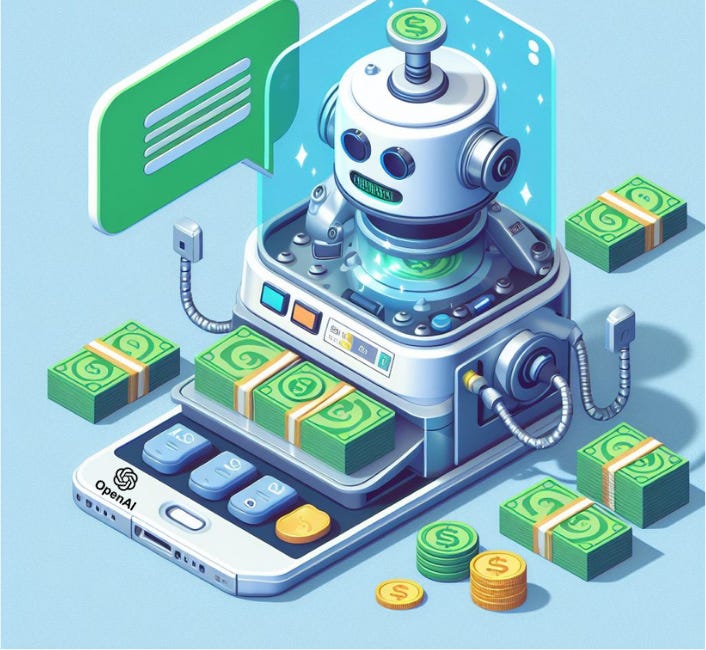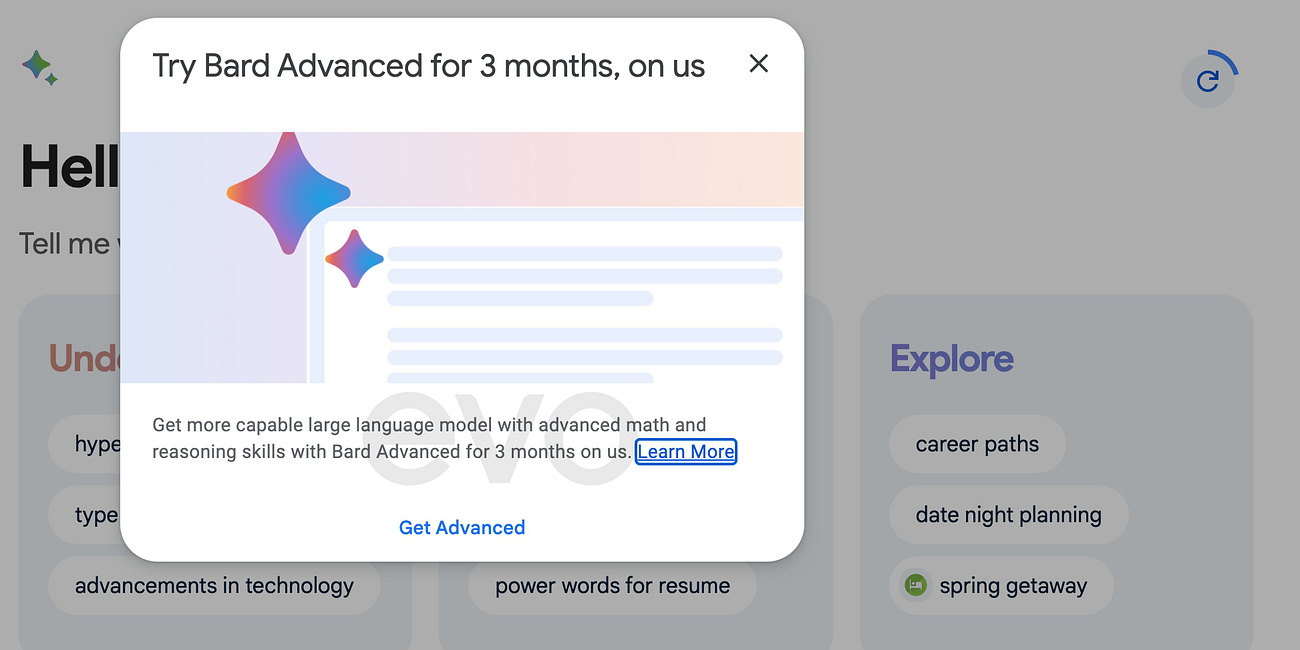OpenAI's GPT Store to Launch this Week - Don't Get Your Hopes Up
Assistants do not have a great track record as platforms for customized experiences
GPTs generated a lot of enthusiasm when they were first introduced in November 2023. They are easy to create and do not require software coding knowledge. However, they have been restricted to ChatGPT Plus subscribers so far. That requirement led to a surge of ChatGPT subscriptions and OpenAI, pausing new signups for nearly a month.
The example above was created by Synthedia to explore an entertainment oriented GPT. You can give it a try here. Note that it still requires a ChatGPT Plus subscription for now.
GPTs Store
That is expected to change this week when GPTs go mainstream. OpenAI sent emails to existing GPT creators (including me) notifying us that the GPT Store is expected to launch this week. They do not explicitly say that the store will provide access to free ChatGPT users, but that is the expected outcome. It is also important. There are likely between 5 and 10 million ChatGPT Plus subscribers, a small fraction of the 100 million weekly active users.
The wider audience reach and expected GPT discovery features in the store will be important to GPT creators who hope to raise their influence or generate income. ChatGPT is OpenAI’s iPhone, and the GPTs store is its App Store. It is unclear whether free ChatGPT users will be able to create GPTs. However, Synthedia forecasts that privilege will be reserved for Plus subscribers for some time, as it can continue to be an incentive for free users to convert to paid.
If you would like to learn more about GPTs from the creator/developer perspective, Synthedia held a live stream demo day in November. This included a demo of 10 different GPTs and what the developers had learned.
Assistants and Apps
GPTs are not the first time an assistant platform has rolled out app development. The approach is similar to Amazon Alexa, Google Assistant, and Samsung Bixby. The core ChatGPT experience remains the same. The features are the same, but GPT creators can form a tailored experience around a specific idea. The implementation of that idea is limited to:
Prompt engineering: GPTs include ChatGPT instructions as a system prompt that describes how it is supposed to act and the experience it should deliver to users.
Customizable user interface buttons: The four buttons offer users ideas about how to start with the experience.
Name and short description: The name and description provide context for users about the GPT and what they should expect.
It is still ChatGPT in the background. The creator is simply shaping how ChatGPT operates based on the system prompt that guides the experience.
This was also mostly true of Alexa, Google Assistant, and Bixby. It remained a voice assistant experience similar to others on those platforms, but the developer could enable new features and experiences. Each of the voice assistants had an app store to promote developer offerings, and not one produced a viral hit. There was a similar experience with Meta’s Messenger chatbots. And, of course, they were all accompanied by complaints about discovery challenges.
ChatGPT has this history to contend with. Assistants and chatbots have provided a lot of value to users as applications but not necessarily as platforms. If GPTs succeed, they will buck an unfortunate trend.
Keep in mind that the mobile app stores are quite different. They offer a common computing environment and distribution but no commonality in terms of features or user experience. Mobile apps are blank canvases for custom development.
GPTs, like Alexa skills, offer a configuration option with plenty of constraints from the technology, the UI, and user expectations. It is possible the next Facebook, Uber, Angry Birds, and Netflix emerge as GPTs. It just isn’t likely. Granted, it is more likely than with Alexa or Google Assistant, given the greater constraints of those technologies, UX, and policies. In addition, some exceptions are likely to drive more success than was found on the voice assistant and earlier chatbot platforms.
The Exceptions
The first exception to this rule is likely to be digital companions. These are the AI boyfriend and girlfriend concepts that have been instrumental in Character.ai’s rapid user growth. However, they could also be other forms of companions as entertainment and emotional fulfillment. Digital friends, confidants, counselors, and other conceptual designs are well suited to the conversational capabilities of ChatGPT.
Another exception could be education and research. You could create your own prompts designed to get the most out of ChatGPT for these solutions. However, if someone else has done this and connected a custom knowledge base, it will save you the trouble. The custom knowledge bases may turn out to be a very significant additional benefit to users.
Finally, there is the idea of personalization. Individual users can enable a personalized experience simply by creating a custom GPT. Making it a GPT, saves the trouble of re-creating an elaborate prompt every time a recurring need arises. That may turn out to be the biggest benefit of all.
OpenAI's Revenue Climbs to $133M Per Month, Likely From 1 Million New ChatGPT Paid Users
The Information reported that OpenAI closed the year with a $1.6 billion annual revenue run rate. This translates into about $133 million per month and a $25 million per month rise since the last rumors of about $108 million in November. What happened between November and the end of December to cause such a late-year surge?
Google Bard Code Leaks Point to New Features and a Paid Version with Gemini Ultra
Android developer and part-time 9to5Google contributor Dylan Roussel has published a thread on X about what he believes are upcoming features for Google Bard. His conjecture is based on a review of a recent application code release. The most significant is likely to be a subscription service that provides access to the Gemini Ultra large language model …







